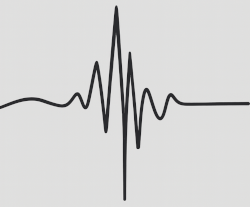

Talmuds
Background
Lack of Excerpts
Russell (1980) noted the apparent silence of Jewish sources on the Temple rebuilding project. Part of this may have to do with one point of view
in Jewish eschatology where the Temple is not supposed to be rebuilt until the arrival of the messiah.
The silence in the Jewish sources brings into question whether some Christian sources were accurate in describing the Temple rebuilding project as involving
significant Jewish involvement. Did one faction of Judaism, perhaps swayed by national/ethnic pride seek to rebuild the Temple or did Christian theologians and
apologists seek to tell a story of the triumph of Christianity over its Jewish and Pagan (represented by Julian) rivals with the assistance of God's hand in
summoning an earthquake, fire, and signs from the heavens ? While we do not have a definitive answer to this, the silence of Jewish sources does cast doubt on,
at the least, the accuracy of the Christian sources on Jewish involvement and by extension highlights the increasingly embellished tales of fires from heaven
or the earth, crosses appearing in the skies, and indelible black crosses appearing on the clothing of "the Jews" in the days after the earthquake. There
may be a "kernel of truth" to some of these embellished tales (e.g., a fire raging in Jerusalem in the aftermath of the earthquakes and inclement weather
around the time of the earthquakes) but it seems that a lot of tall tales entered the apologetic literature. Russell's (1980)
discussion with links to other sources is repeated below:
With the exception of two rather
obtuse statements in the Palestinian Talmud
attributed to R. Acha, which might have been
intended as a rationale for rebuilding the Temple
(see Bacher 1898), the only other Jewish accounts
date to the 16th century and were obviously based
upon earlier ecclesiastical sources (see Adler 1893:
642-47). The apparent correlation between the day
on which the Temple project began (as given in
Harvard Syriac 99) and the Jewish semifestival of
Lag ba-`Omer (Brock 1976: 104;
1977: 268) makes
this silence even more of an enigma.
Such considerations not withstanding, the historical
"kernel of truth" for the events of 363
involves Julian's attempt to rebuild the Temple
and the subsequent occurrence of a devastating
earthquake. The death of Julian in the following
month ushered in an unbroken line of Christian
emperors to the Roman throne, and the temple
project was never resumed. Whether Jews were
actively involved in Julian's project, as maintained
by ecclesiastical accounts. or refused to participate,
as maintained by Graetz ( 1956: 597-601) and
Baron (1952: 160-61) remains a moot point.
Online Versions and Further Reading